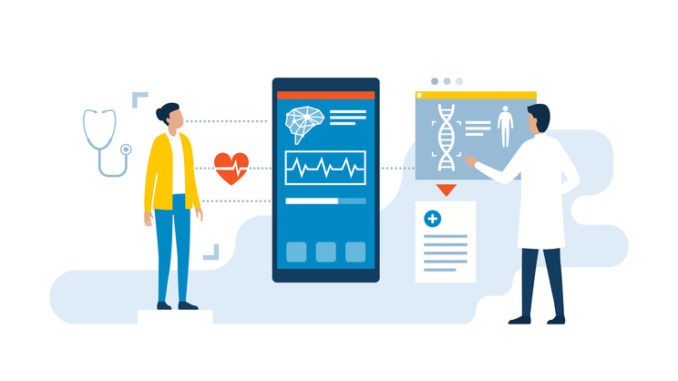
Dr Owain Rhys Hughes explains how practice managers can navigate the new remote working landscape catalysed by COVID
Without a doubt, the remote working revolution is well underway. Kick-started by the necessities of lockdown, employees and managers alike have woken up to the feasibility and benefits which can come from blending in-person services with socially-distanced operations.
Despite facing unique challenges, the healthcare sector is by no means exempt from the uptick in remote working. Although many doctors are now back in the workplace full-time, there are still those who are shielding, quarantining, or adapting to new family or professional responsibilities. For this group, the option to work effectively from home is still highly valued.
In GP practices, doctors and support staff are negotiating their newly COVID-secure surgeries as they adapt to delivering care in a changed, and still fluctuating, healthscape. Despite valiant efforts to implement every precaution, several practice managers have privately admitted to me that they’re losing sleep over worries that a member of their core staff team will test positive for COVID. Such an event would trigger extremely serious consequences for the staffing of the surgery – potentially, even temporary closure.
From my perspective as a doctor-turned-healthtech innovator, I believe wholeheartedly that in order to reduce the risks, and mitigate the consequences of virus transmission, primary care services must act now to implement the top tech tools. Time is of the essence and, with some savvy decision-making, it’s entirely possible to reduce inter-personal contact and enable successful socially-distanced operations from which patients and doctors will reap rewards.
What’s on the table?
Since the start of 2020 there has been a proliferation of new technologies made available to the NHS to support distance working and collaboration. However, the time has now come to settle on a permanent, appropriate and cost-effective solution, and to reject those temporary solutions which have proved inappropriate, or which are no longer fit for purpose.
The stakes are certainly high; if future lockdowns are implemented, it will be essential for primary care services to react and adapt without an interruption in services. I’m convinced that the ability to do this will largely depend on how each practice integrates digital tools into their normal practice this autumn.
What should be prioritised?
At times of significant service pressure any new tech should save doctors’ time, and reduce administrative effort, not add to them. User-friendly interfaces, system interoperability and mobile-accessibility are must-have features of any new tech tools – so keep these criteria firmly in mind when considering options.
When it comes to addressing pain points, NHS leaders are in firm agreement that streamlining communications between primary and secondary care professionals is a must if the service is going to succeed in tackling the post-COVID backlogs. Keeping this in mind, l would recommend seeking out technology which facilitates this without tying doctors down to desktops and landlines.
App-based platforms, which allow GPs to directly video-call and instant message hospital consultants, have proved highly effective in streamlining patient referral pathways. These tools support remote working because they allow consultants to advise GPs on specific patients from afar. This means that fewer patients are incorrectly referred to A&E, or specialist clinics, and that conditions are managed with fewer in-person appointments.
Communication via mobile ‘phones is the norm amongst the incoming generation of medics, as is conveying information through instant messaging. What matters most now is tapping into the location-agnostic efficacy of the smartphone. If we can move beyond answering machines, pagers, email chains and faxes, we can empower GPs to make smarter referrals and deliver the best outcomes for their patients.
Security is key
Infant-stage communication technology is flooding the primary care market, but there’s no guarantee that every option you are presented with can be trusted to safeguard your patients and doctors.
You must investigate the compliance credentials of any new technology you intend to use – it should be GDPR and DSPT compliant, registered with the Information Commissioner’s Office, and meet NHS Digital standards of security and patient confidentiality. The NHSX has recently published their new Clinical Communications Procurement Framework, a list of vetted and approved providers of digital communication solutions which you can select from with confidence.
Listen to colleagues and look for proven success
Naturally, there will be clinicians in your practice who are wary of change. However, ultimately, it’s the practice staff who’ll be expected to use the new digital tools on a daily basis, so it’s essential that they are involved in the decision-making process.
Don’t be afraid to run trials with new tech before you adopt it wholesale; listen to the opinions and feedback of your colleagues and search for reviews and published evidence of the technology’s record of delivering on its marketed promises.
Look to the future
If there’s one thing 2020 has shown us, it’s that preparedness, and investment in digital architecture, does pay off. We’ve learnt that human connection is the foundation of successful healthcare, but that this human connection can be successfully mediated by intelligent digital platforms.
Practice managers must now seize this once-in-a-generation opportunity to be changemakers in their sector, by equipping doctors with best-in-class technology.


Be the first to comment